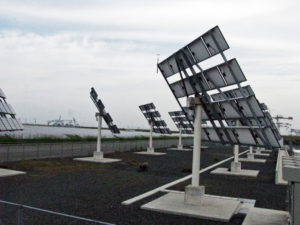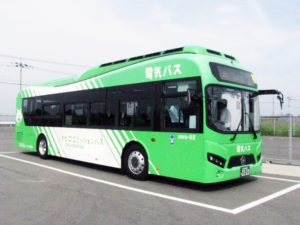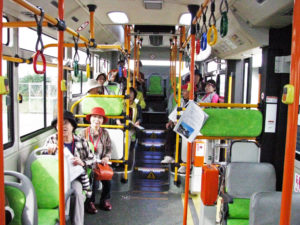Hibikinada Biotope in Kitakyushu
Japan’s largest Biotope. The Paradise of creatures made over the year in the waste disposal
site. 237 kind of birds including circus spinouts listed on the Japan’s endangered species
and 284 kind of vegetation have been confirmed in the Biotope of 41 hectares.
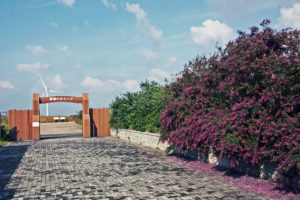 |
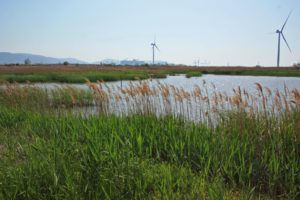 |
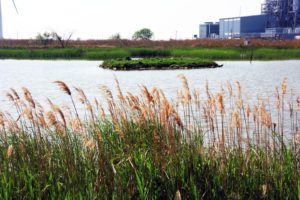 |
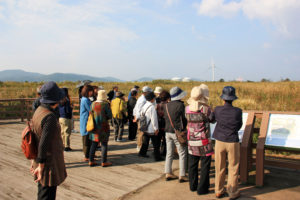 |
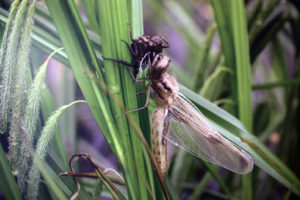 |
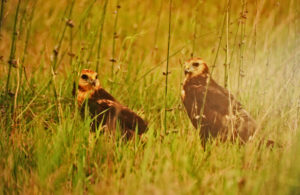 |
General information
| Address | 1 Hibikimachi, Wakamatsu-ku, Kitakyushu-city, Fukuoka-prefecture |
| Access |
30 minutes by a vehicle from JR Kokura Station |
| Open hours |
9:00 to 17:00 |
| Admission fee | JPY 100 |
| Days closed | Tuesday |
Home Tailor-made tours Study tours Christian Pilgrimage tours Golf tour Kyushu tour packages
Zero Emission Transportation System
Global environment friendly Transportation System. The Electric bus driven by the electricity
generated by a solar power generation, therefor no global warming gases emitted from the bus.
Operation of the system is commenced in 2015. The solar power generation plant, the power
charging equipment and Electric bus can be observed. The electric bus operates between
Wakamatsu and Tobata in Kitakyushu-city.
|
Solar Power Generation for the Electric bus |
Electric bus |
On the Electric bus |
General information
| Address | Koyomachi Wakamatsu Kitakyushu-city Fukuoka-prefecture |
| Access | A 30 minutes ride a vehicle from JR Kokura Station |
| Days of visit | Weekdays except Saturdays, Sundays and National Holidays |
| Fee | No visiting fee is required |
| Booking | Can be made by Japan KYUSHU Tourist |
Home Tailor-made tours Study tours Christian Pilgrimage tours Golf tour Kyushu tour packages
Kitakyushu Eco-Town Center
Eco Project information center that supports the Eco-town. It introduces initiatives and activities
implemented in Eco-town to encourage people to proactively used the facility for such activities
as environmental study sessions and interaction amongst visitors.
Kitakyushu Eco-Town is a project being developed after the city received approval from the central
government. It is composed of two main areas; a corporate park (Comprehensive Environmental
Industrial Complex, Hibiki Recycling Area) located in Hibikinada area in Wakamatsu Ward where the
majority of the companies engaged in the recycling business based on the Eco-Town Project, and a
practical research area where enterprises and universities conduct research.
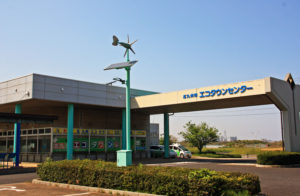 |
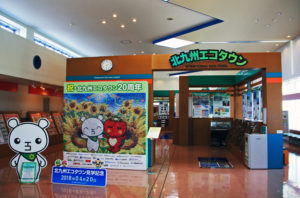 |
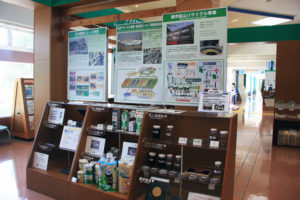 |
First Eco-Town Center in Japan opened in June, 2001
With an eye to building a “resource-recycling society,” Kitakyushu-city is engaged in the
‘Kitakyushu Eco-Town Project’ in which an environmentally-friendly society is formed by bringing
together recycling plants and research institutes. The Kitakyushu Eco-Town Center plays the role of
an information center that supports the Eco-Town. It introduces initiatives and activities implemented
in Eco-Town to encourage people to proactively use the facility for such activities as environmental
study sessions and interaction amongst visitors.
With visitors coming from all over Japan, the center takes reservations for visits as well as provides
tours of recycling plants and research facilities. Inside the center, technologies and products related
to the environment and recycling are exhibited while the details of the project of the Kitakyushu
Eco-Town Center are introduced on panels hanging on the wall. Furthermore, the center provides
facilities available for environmental study, exchange activities and research work.
General information
| ・Address | 10-20 Koyomachi Wakamatsu Kitakyushu-city, Fukuoka-prefecture |
| ・Access | A 30 minutes ride a vehicle from JR Kokura Station |
| ・Opening hours | 9h00 to 17h00 |
| ・Days Closed | Sunday, National holiday, December 29 through January 3 |
| ・Fee | No entrance fee is required |
|
・Booking |
Contact Japan KYUSHU Tourist for booking |
Home Tailor-made tours Study tours Christian Pilgrimage tours Golf tour Kyushu tour packages
Kyushu Electric Power / LNG thermal power plant
Kyushu Electric Power / Shin-Kokura Plant. Kyushu’s first thermal power plant used LNG
and power generation capacity is 1,800,000kw. Generation of electricity process can be
learned by visiting the turbine room, control room and boiler plant.
Where to visit
Exhibition hall, Control room, Turbine room and Boiler room
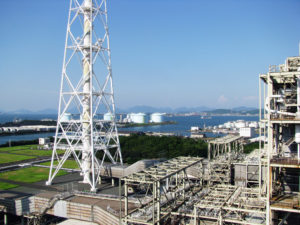 |
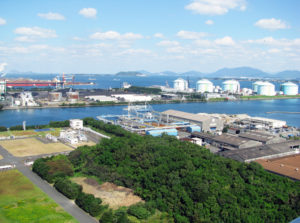 |
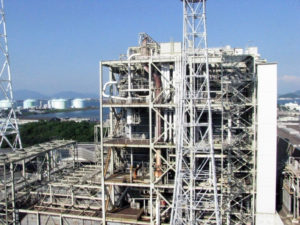 |
General information
| Address | 64-1 Nishiminato-machi Kokura-kita, Kitakyushu-city. Fukuoka-prefecture |
| Access | A 15 minutes ride a vehicle from JR Kokura Station |
| Days of visit | Weekdays except Saturdays, Sundays and National Holidays |
| Fee | No visiting fee is required |
| Booking | Can be made by Japan KYUSHU Tourist |
Home Tailor-made tours Study tours Christian Pilgrimage tours Golf tour Kyushu tour packages
J-Power in Kitakyushu
The company have been supplying low-cost and reliable electricity for over 60 years.
And research and development of the environmental measurement have been conducted.
New solar power generation and wind power generation systems can be learned.
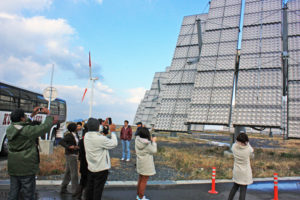 |
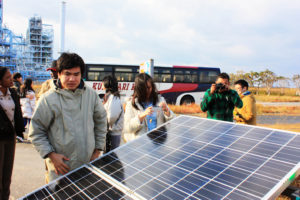 |
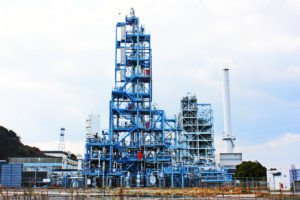 |
General information
| Address | 1 Yanagisaki-machi, Wakamatsu-ku, Kitakyushu-city |
| Access | 30 minutes by a vehicle from JR Kokura Station |
Home Tailor-made tours Study tours Christian Pilgrimage tours Golf tour Kyushu tour packages
Wind Power Generation
Japan’s first wind power generation plant constructed at the coast line facing windy strong
Hibikinada sea. 10 wind power generators line up and total generation capacity is 15,000kw.
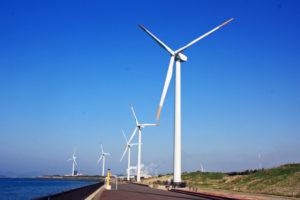 |
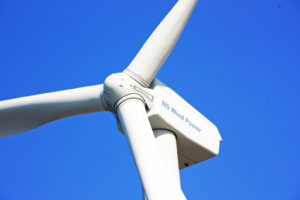 |
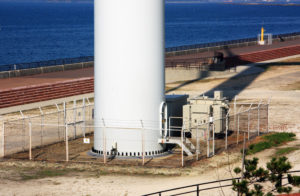 |
General information
| Address | 2 Hibiki-machi, Wakamatsu-ku, Kitakyushu-city. Fukuoka-prefecture |
| Access | 30 minutes by a vehicle from JR Kokura Station |
| Days of visit | No closing day |
| Fee | No visiting fee is required |
| Arrangement | Japan KYUSHU Tourist can arrange to visit |
Home Tailor-made tours Study tours Christian Pilgrimage tours Golf tour Kyushu tour packages
Environmental Future city Kitakyushu
Kitakyushu is the city of leading Global Environment
Kitakyushu-city has the long history of Environmental improvement since the pollution problem
experienced in 1960′. Now Kitakyushu-city is leading World environment as the Environmental
Future City selected by Japanese Government and also designated as the first ‘ Model City for
Green Growth ‘ in Asia by the Organization for Economic Co-operation and Development
(OECD) in 2011.
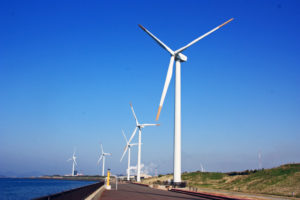 |
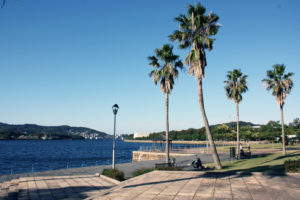 |
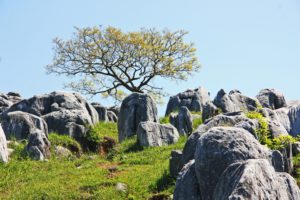 |
The history of Environmental improvement
The History has commenced in 1901. The city once experienced the worst air pollution in Japan
and saw Dokai Bay turned into a “sea of death.” But it regained blue skies after overcoming its
pollution problem by the efforts of city, companies as well as the women’s association. Kitakyushu
City, once known as a “town of pollution,” now plays the role of the driving force in creating a
recycling-oriented society in Japan making use of the experience and know-how it accumulated
in the process of overcoming its pollution in order to provide international cooperation.
The city grew as an industrial city after the establishment of Yawata Steel Works in 1901.
It led Japan during the period of modernization and high economic growth with a focus
placed on heavy industry.
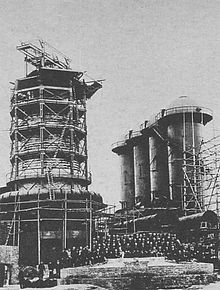 |
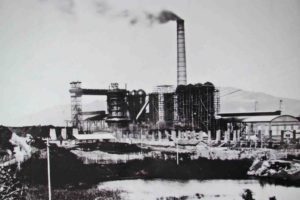 |
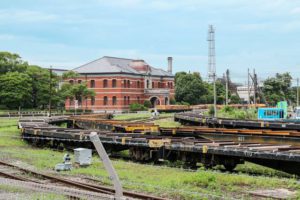 |
Back then, plumes of smoke coming out of the steelworks were referred to as “seven-colored
smoke” which was sung as part of the lyrics of the song of former Yahata City as it was regarded
as a symbol of prosperity. However, the prosperity of industries brought about severe pollution
and quite naturally the “seven-colored smoke” polluted the air and caused dust deposition.
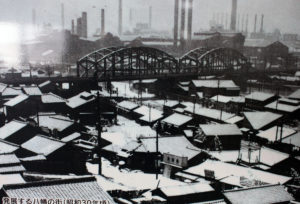 |
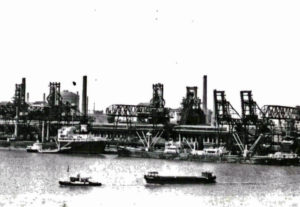 |
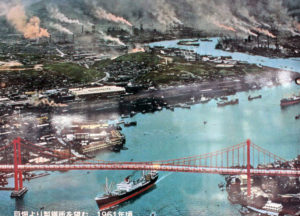 |
In the 1960s, air pollution in the Kitakyushu area was the worst in Japan and Dokai Bay was turned
into a “sea of death” due to effluent from factories. It was citizens who first noticed this problem of
pollution. The city started to hear the voices of its residents saying such things as, “my house is
becoming sandy” and “the laundry gets dirty” from around 1950.
The Women’s Association in Tobata area stood up, investigated the problem themselves and asked
the council, administration and companies to take measures against pollution. ‘I Want Blue Sky’, a
documentary film produced by the Tobata Women’s Association in 1965 was what symbolized the
citizens’ campaign calling for measures against pollution.
Pushed by the voices of its citizens, the Kitakyushu administration started to take action to grasp
the actual situation by measuring the level of air pollution. It then gave instructions and conducted
on-site inspections at these companies urging them to take measures to improve the situation.
Finally, the city concluded a pact on pollution prevention with each plant and established the Council
on Air Pollution Prevention made up of the city, Fukuoka Prefecture, then Regional Bureaus of
International Trade and Industry and about 30 companies in the city.
These companies responded by putting pollution control facilities in place as well as improving the
process of production.
In the meantime, the Air Pollution Control Act and Noise Regulation Act came into force in 1968 and
the following year, in 1969, a smog alert was issued for the first time in Japan. Fourteen pollution
control related bills passed the so-called ‘Pollution Diet’ in 1970. Thus, public concern towards
pollution problems grew high throughout Japan while in Kitakyushu, the city and companies worked
hand in hand to tackle the pollution problem which resulted in rapid improvement in the environment.
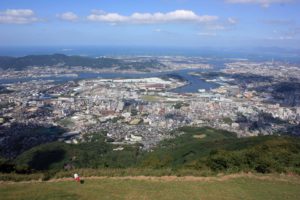 |
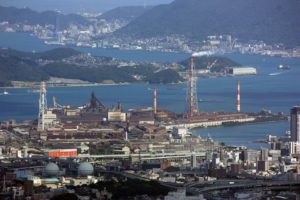 |
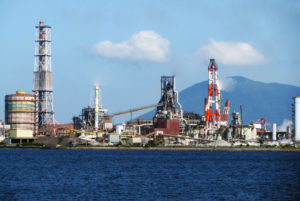 |
As a result, by around 1980, the blue sky came back to the town once covered with ‘ seven-colored
smoke.’ Furthermore, over 100 species of fish live in Dokai Bay which was once nicknamed the ‘sea
of death’ where not even bacteria could live. In 1985, the Organization for Economic Co-operation
and Development (OECD) introduced Kitakyushu in its White Paper on the environment as a city
that transformed itself from a ‘Gray Town’ into a ‘Green Town.’ Also the city was selected as one of
the ‘Starry Towns’ with a favorable atmospheric environment in the ‘Starry Town Contest’
held by the Environment Agency in 1987.
These initiatives by Kitakyushu City are highly recognized by the global society. In 1990, the city
received the ‘Global 500 Award’, which is given by the UN Environment Program (UNEP) to
individuals and organizations that combat environmental issues, and was the first local government
to win the Award in Japan. At the Earth Summit held in Rio de Janeiro, Brazil in 1992, Kitakyushu
City was honored with the ‘Local Government Honors Award. The city is the only local government
to win the Award in Japan.
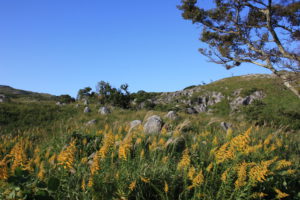 |
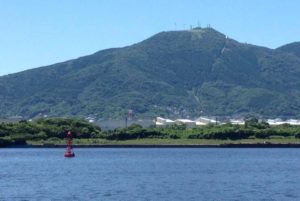 |
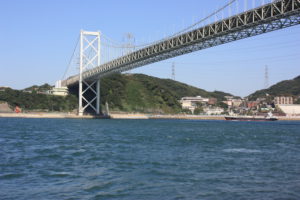 |
In addition, the initiative towards a better environment was enhanced and it started the sorted
collection of cans and bottles in 1993. In 1998, a system in which residents are obliged to use
designated plastic bags for municipal waste started. In 2001, ‘Kitakyushu Expo-Festival 2001’
with the environment as a theme was held at Higashida area, an idle land owned by Nippon
Steel Corporation, where infrastructure improvement work was going on based on the concept
of ‘Kitakyushu Renaissance. Then, the concept of a ‘Green Village’ in Yahata Higashida began
in 2003. Thus, efforts towards a better environment advanced further.
As mentioned above, Kitakyushu was recognized as the ‘Environmental Model City’ together with
12 other local governments in 2008. The ‘Kitakyushu Asian Center for Low Carbon Society’ was
opened in 2010, and in 2011 the city was selected as a ‘Environmental Future City’ and also as
the first ‘Model City for Green Growth’ in Asia by the Organization for Economic Co-operation and
Development (OECD).
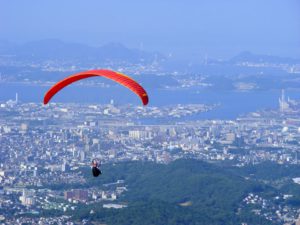 |
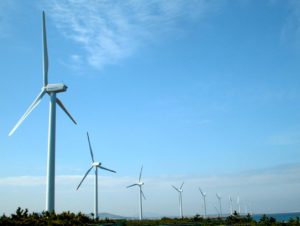 |
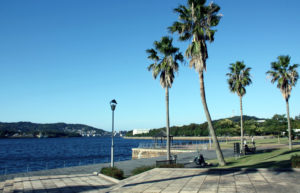 |
A new challenge as the driving force towards realizing a global low carbon society has started
in Kitakyushu City where Japanese industry started.
Tobata Gion Yamagasa
Tobata Gion Oo-Yamagasa is one of the most exciting summer festivals in
Kitakyushu .festival
The Festival is registered on UNESCO Intangible Cultural Heritage in 2016.
The festival has a lot of energy and is very dynamic as is the case with festivals such as the
Hakata Gion Yamagasa,with young men wearing the happi (festival costume) and hachimaki
(head band), carrying the Yamagasa (festival float) and walking around the town shouting
“yoitosa yoitosa”.
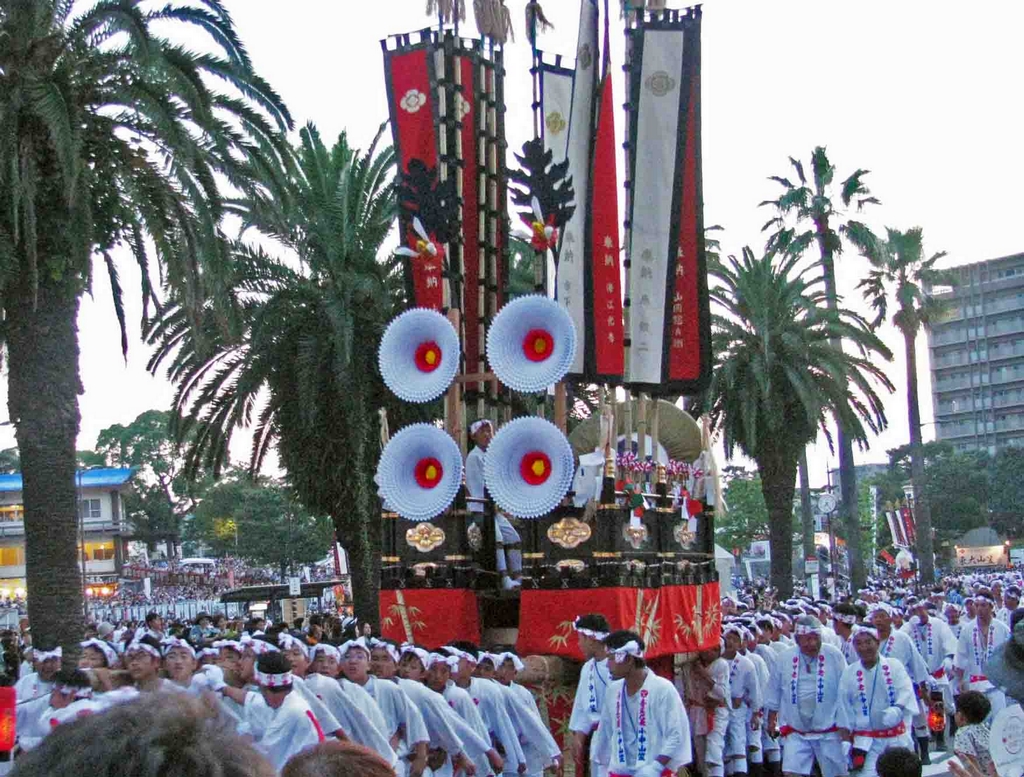 |
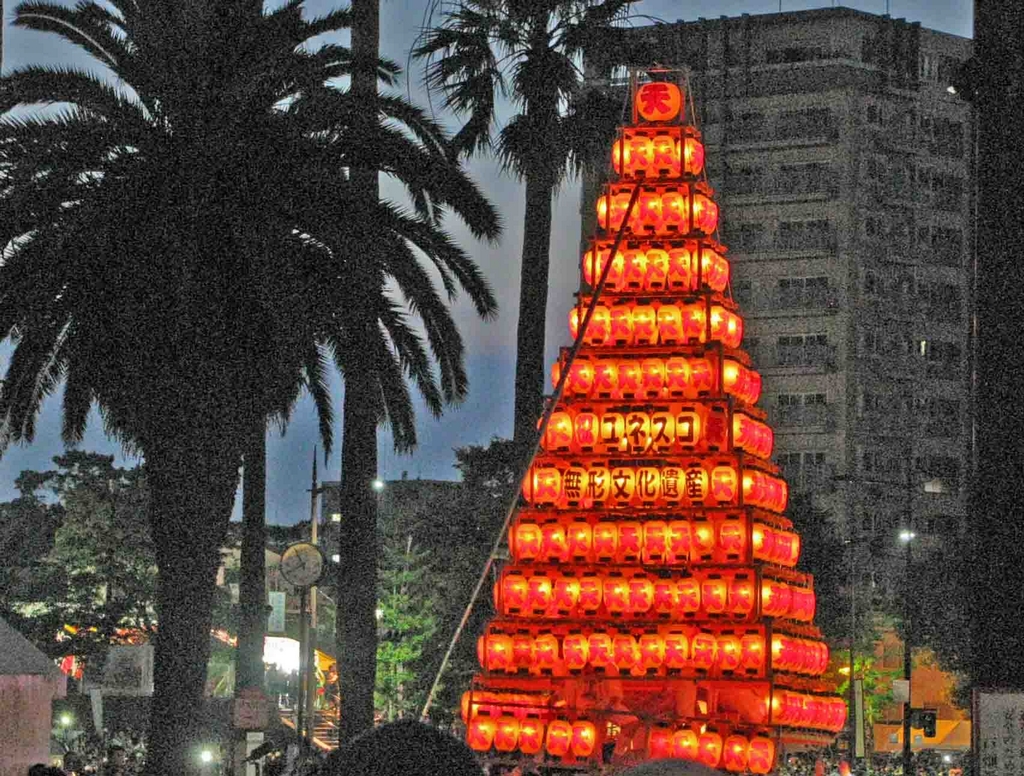 |
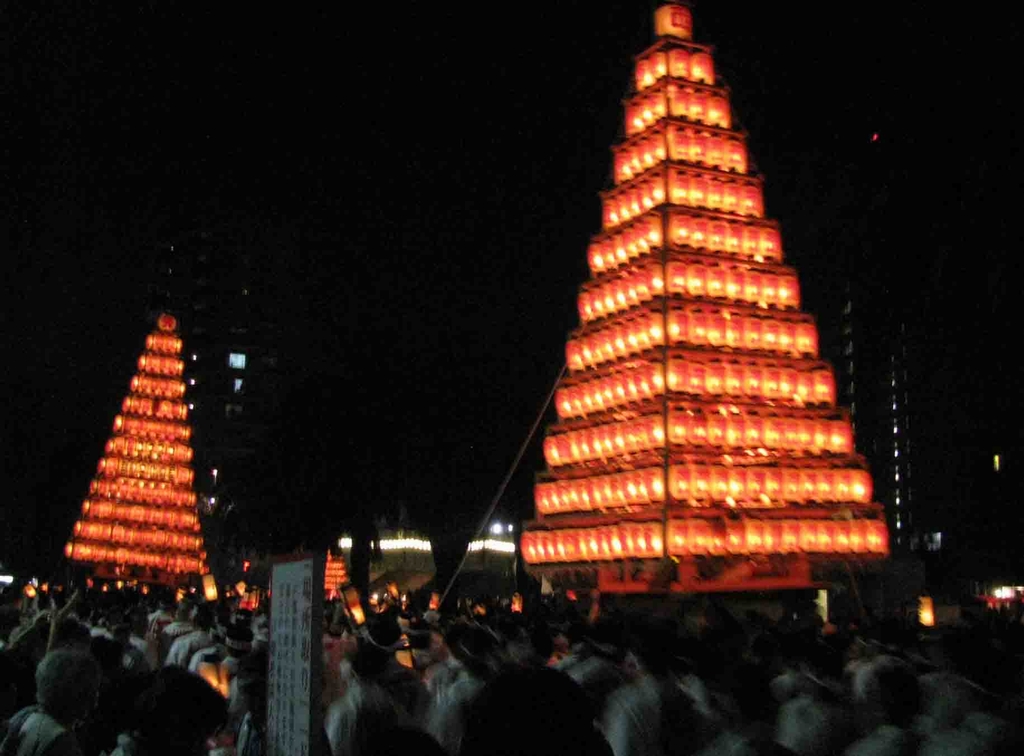 |
What is remarkable is the way the character of the Yamagasa changes from daytime,with the
Nobori Yamagasa (festival floats with flags); to nighttime,with the Chochin Yamagasa
( festival floats with lanterns).
The Nobori Yamagasa used during the daytime is dismantled,and the 10 metre-high Chochin
Otani-kaikan Hall
Art Deco style building used for Banquet and Wedding ceremony. Built in 1927, opened as
an employee club of the then-owned Yawata Steel Works The western-style building of Art
Deco style architecture. The Hall building received the Kitakyushu City Architectural Culture
Award in 1989.
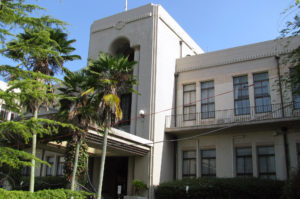 |
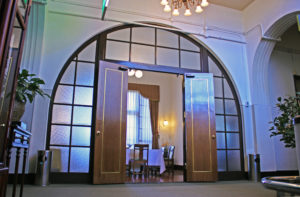 |
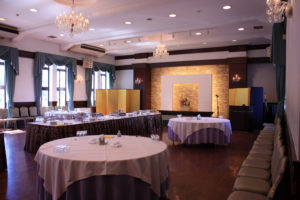 |
General information
| Address | 1-2-4 Otani Yahata-higashiku, Kitakyushu-city, Fukuoka-prefecture |
| Access |
20 minutes by a vehicle from JR Kokura Station 60 minutes by a vehicle from Fukuoka-city 100 minutes by a vehicle from Beppu 100 minutes by a vehicle from Yufuin |
Home Tailor-made tours Study tours Christian Pilgrimage tours Golf tour Kyushu tour packages
Sankiro
The largest three-story wooden building used for Ryotei in Kyushu. The Ryotei is a type
of luxurious traditional Japanese restaurant Sankiro was built in 1928 and was the largest
three-story wooden building used for Ryotei in Kyushu, and was a representative building
for the time. There were over 1200 square meters of floor space and more than 20 rooms.
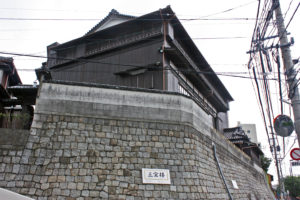 |
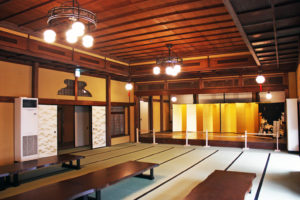 |
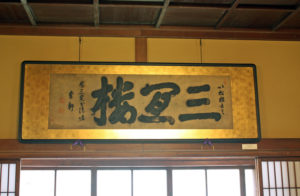 |
At the present, the building is used for Japanese restaurant, Shunpanro.
General information
| Address |
3-6-8 Kiyotaki, Moji-ku, Kitakyushu-city, Fukuoka-city |
| Access |
10 minutes walk from JR Mojiko station 25 minutes by a vehicle from JR Kokura station |
| Open hours | 10:00 to 17:00 |
| Admission fee | No fee is required |
| Days closed | Monday |
Home Tailor-made tours Study tours Christian Pilgrimage tours Golf tour Kyushu tour packages

